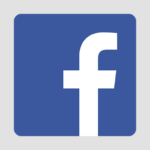As part of our ongoing discussion of the art of DJing, we gathered a list of 12 DJ tips to raise your game to the next level. Figuring out the basics of DJing is one thing, but learning how to work a room with subtle changes in programming and sound is something else. While there are no real rules to DJing, what follows is a list of tips based on years of professional experience.
Practice and Prepare
Practice makes for much better DJ sets than a free-form approach to the craft. Having only a vague idea of what you are going to play usually makes for a halfhearted DJ set. You’ll find that accomplished turntablists and groove-riders alike have all spent countless hours perfecting their sets. We don’t necessarily recommend pre-planning the entire set, either, but you should get to know your options before you show up to perform. Spend time to find tracks that mix well and make playlists of those tunes for future use. Make different kinds of playlists for different kinds of gigs. Finding tracks that work well together takes time, and it rarely happens spontaneously at the gig.
Be Flexible
As a professional DJ, you don’t necessarily have to take requests. You can stand by your own style and selection. However, playing more than one specific style of music is a great way to gain more opportunities for performance. There are many types of clubs and events, and different types of crowds. Try to find selections from your music collection that will work with these different groups.
“Don’t necessarily divide playlists by genre, but by mood (aggressive, melancholy, soulful, etc.) and energy (slow, medium, fast). If you practice enough and have good taste it will all come together naturally.”
Plan in Threes
This method of organizing music for DJ performance that I’ve found to work extremely well in my own experience. When planning a set, I like to find three records that mix well together at a time. Optimally these three records can all be played together at once, or they can transition into one another. Next I find another set of three. Then another. Eventually, I have a stack of records that are organized by how they mix together, and I start to organize those sets of three into a flow of slow to fast/mellow to banging. I like to have 60 tracks selected for an hour of performance. I won’t play all 60 (I usually play around 20 tracks per hour), and I won’t always play those exact mixes (spontaneity is still important in a DJ set). I have options that go in every direction, and I know that I can find my way from one type of sound to another while staying deep in the mix the whole way. Knowing this allows me to be much more experimental on-the-fly, and it always works better than if I don’t plan.
Identify Your Audience
Identify your audience before you perform. That statement doesn’t just mean to find out what they like and play it — you need to know the size of the room you’ll be playing in, the number of people who may be there, and the general musical vibe for the evening. Know your time slot and what frame of mind people will be in when you are playing. Part of being a DJ is sonic empathy: take the time to know your audience and identify what sort of sounds they might connect with to keep them engaged.
Mike Huckaby at Movement Festival 2012Mike Huckaby playing at Movement DEMF 2012
“At every gig you play, there are usually 1-3 people in the crowd or on the dance floor that you need to pay attention to. These are the key individuals who set the tone of the night. They are usually the ones that set it off for everyone else. Everyone else is paying attention to them, but they would never admit it. These key people usually set the comfort zone and allow others to express themselves in ways that they would never do otherwise. They are also the first ones to dance, set the pace, and the tone of the night. If you study these key individuals during your set, and push their buttons, it will have a positive effect on you, others, and the whole night. It works every time.” ~ Mike Huckaby
Play Appropriately for your Time Slot
This thought has been a hot topic on our social media channels, culminating in our recent Tips for Opening DJs article where A-list DJs all delivered a very similar sentiment — don’t try to blow up the dancefloor at the wrong time. There is an arc of energy that events hope to achieve, and promoters usually book DJs to fill these different time slots hoping that they will bring the proper energy for that time slot. Many beginner DJs are so eager to play “their sound” and impress their audience that they end up playing inappropriately for their time slot (usually an opening slot for up and coming DJs). The best thing you can do during an early slot is lay down an even-keeled, in-the-pocket vibe that doesn’t give up too much energy too early.
DJ Dan
“The key to being a good DJ is knowing how to pace the energy of the night. I guarantee you will get way more compliments if you play appropriately to your time slot. The one mistake I see up and coming DJs do that is never cool is to bang the shit out of it before the headliner goes on—as if to impress that next DJ. That is not cool. If you really want to impress the next DJ and the crowd, play appropriately and sexy and let the night have a nice build.” ~ DJ Dan
Programming
Programming is probably the most important aspect of a DJ’s set. A perfect technical mix with no soul is never as good as a less-technical mix with lots of vibe. The music is what moves your audience, and the flow of music from one track to another can truly create a journey if you take the time to plan that journey. Many DJs lose sight of this when the excitement of crowd response is happening, and they slip away from the journey and into instant musical gratification. A seasoned DJ will never go the route of instant gratification because it’s a short-term fix, and a crowd will burn out quickly on this vibe.
Push and Pull
The best DJs I’ve ever heard all taught me a similar method in how to approach programming a DJ set. Some call this “the push and pull,” giving the crowd just enough energy to dance and be excited, but never giving it all up until the right moment. Old school house DJs like Derrick Carter have mastered this method, with sets that build up into banging music and then down into something deep for a moment, pushing and pulling the energy of the set to make the crowd more excited. It’s amazing how well this method works, in a single DJ set and also over the course of an event. I remember visiting Turnmills in London a few years back when Mr. C and Carl Clarke were spinning, and I was totally blown away by the pacing these guys kept over the course of their set. From 10 PM until about 2 AM there were hardly any vocals and not very much melody; even the lighting was stark black and white. But as things warmed up around 2, they slowly started to give the crowd what they wanted, which resulted in hands-in-the-air response until 6am that morning.
Keep Your Levels Out of the Red
To achieve the best sound quality during a DJ performance or recorded mix, make sure you are getting a good strong signal both in and out of the mixer, but always take care not to push any of your levels into the red. This is a simple rule but one that most DJs are guilty of breaking from time to time. When the mix is hot, and people are jumping, most DJs want to pump up the volume. But boosting the channel gain or master volume into the red will distort your signal, making the music sound degraded and killing the vibe. In addition to this, most venues have a master limiter at the final stage of the signal before it goes to the house system, so turning up your mixer past 0db will most likely not have an effect on your overall volume, it will just make your music sound squashed. So always remember: watch your master volume throughout your set, and make sure to keep the meters from going into the red by turning down your levels and/or EQ controls.
Adam Freeland
“Louder does not necessarily equal better. Keep your volume at a reasonable level and give the front of house sound guy some headroom and he’ll make sure you sound good. Give him a distorted signal and there’s nothing he can do except turn you down.” ~ Adam
Proper use of EQ
The three (or four) band equalizer on each channel of the DJ mixer is your most valuable tool for professional DJ performances. There are a couple of basic rules to keep in mind when using EQ; these can be applied to DJ mixers as well as music production.
First Rule
Keep your EQ at 12:00 as a default, unless you are making a particular adjustment. That is to say, the EQ sounds best at unity gain, so keep your EQ at 0db whenever possible.
Second Rule
Cut (don’t boost) the signal. This approach requires thinking backwards through your process a bit. For instance, if you are inclined to turn up the bass, turn down the mids and highs a bit instead and turn up the channel gain if needed.
Another good rule of thumb to follow when DJing is, only use one sub-bass source at a time. Generally speaking, playing two tracks with heavy sub-bass at the same time will create a muddy mix and won’t sound good on a large sound system. EQ is your best friend in these situations — simply turn down the bass of one the tracks when you’re mixing them together to keep the overall sound punchy and tight. You can swap the bass lines back and forth with the EQ knobs or use the crossfader to mix between the two tracks, just remember to only use one bass source at a time for optimum sound quality and crowd response.
Don’t Overdo the Effects
While the use of effects is an artistic choice, and in some cases the basis of a DJ’s sound, I’d recommend that you don’t OVERdo it with effects. Many DJs use effects to help transitions from one record to another and to enhance their DJ performance. Neither of these things are bad, but they become a problem if you rely on them. Audiences have become familiar with Pioneer’s echo, Allen & Heath’s filter and Traktor’s stutter effects. Use your levels and EQ to create interest before turning to the effects, and then when you do drop that echo it will be something special instead of redundant or annoying.
Bring Backup
You never know what could go wrong at the club or event where you’ll be performing. For this reason, it’s always a good idea to bring backup music in different formats. If you play vinyl, bring CDs. If you play CDs, bring records or a couple flash drives of MP3s. If you use a laptop, bring CDs and/or vinyl as backup. An iPod full of your latest tunes is another option for emergency situations where one of your sources dies mid-performance.







0 Replies to “Dj Tips Techniques To Improve Your Live Sets Performances”